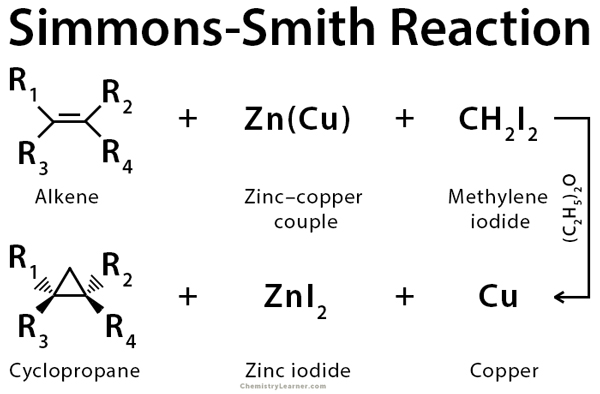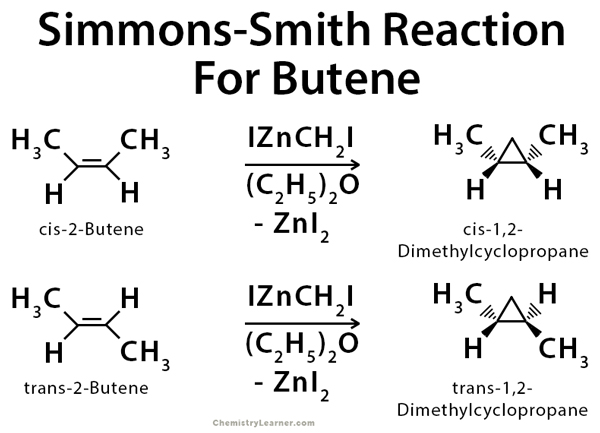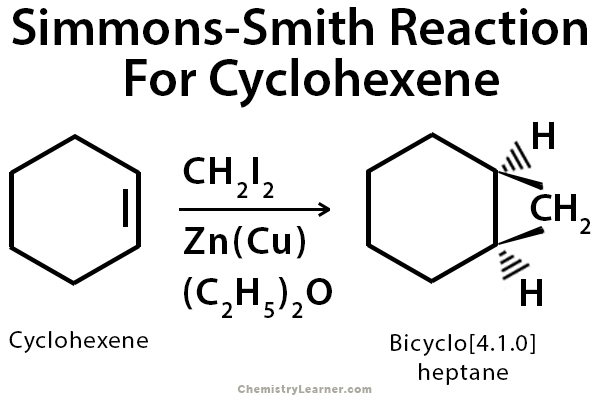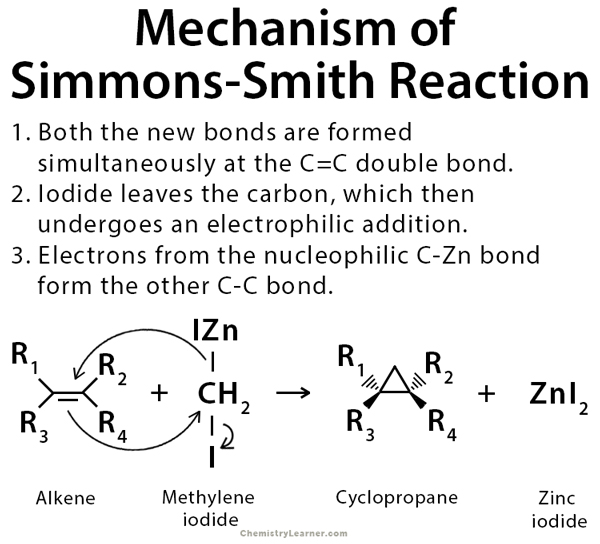Simmons-Smith Reaction
Definition: What is Simmons-Smith Reaction?
Simmons-Smith reaction is an asymmetric reaction in which a carbenoid adds to an alkene or alkyne to form a cyclopropane. It is an essential reaction involving an organozinc reagent. The reaction is typically conducted using diiodomethane in combination with metallic zinc and copper (Zn(Cu)). The iodomethyl zinc iodide is usually prepared using Zn activated with Cu. The iodomethyl zinc iodide reacts with an alkene to give a cyclopropane. The reaction is stereospecific to the alkene. For example, if the alkyl groups of the alkene are cis- then they are also cis- in the cyclopropane and trans-alkenes give trans-cyclopropanes [1-6].
The history of this reaction goes back to 1958 when Howard Ensign Simmons, Jr. and Ronald D. Smith published a journal.
Examples of Simmons-Smith Reaction
The Simmons-Smith reaction can be used for both straight-chained and closed-chained alkene. For example, both butene and cyclohexene will undergo this reaction [3,6].
Mechanism of Simmons-Smith Reaction
The mechanism involves breaking the C=C double bond in alkene and the addition of the methylene group [6].
Advantages of Simmons-Smith Reaction
The Simmons-Smith reaction has a considerable advantage over other cyclopropanation methods. It does not require the use of highly hazardous diazomethane. Besides, the reaction has a broad functional group tolerance, including with alkynes, carbonyls, alcohols, ethers, and others.
References
- Definition – Chem.ucla.edu
- Definition – Organic-chemistry.org
- Definition – Hwpi.harvard.edu
- Definition – Ch.imperial.ac.uk
- Definition – Doi.org
- Mechanism and Examples – Chem.ucalgary.ca








